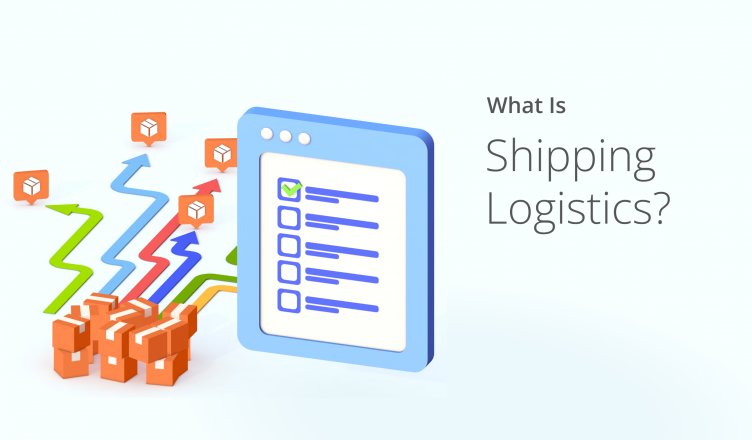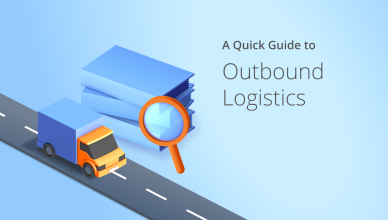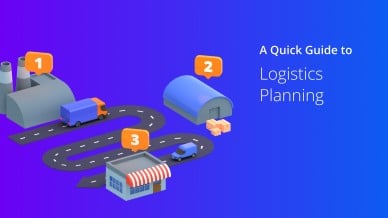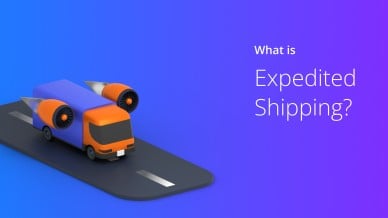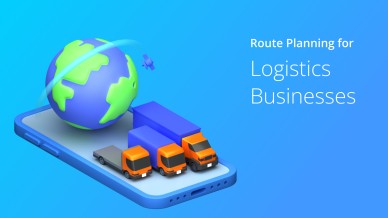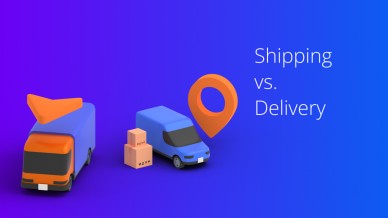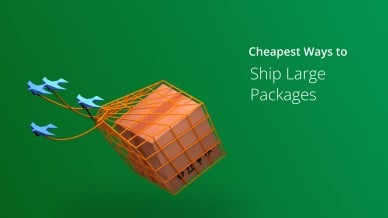It’s proven that efficient shipping logistics improve revenue. Around 70% of shoppers prefer to purchase from brands that offer an easy shipping experience.
However, delivering a memorable experience isn’t easy due to the recent surge in eCommerce. According to Statista, American companies manage more than 5.56 trillion ton-miles of transportation of goods each year.
Increasing demand for same-day delivery and free returns has made the job more challenging. It can be even more complicated if you sell directly to consumers.
Because of this, you should consider redefining your shipping strategy to improve the customer experience at a low cost.
Below, you’ll learn about shipment logistics, the differences between shipping and logistics, and how Route4Me can help optimize your shipping logistics.
Table of Contents
What Is Shipping Logistics?
Shipping logistics refers to the entire process of managing the transportation of goods. This includes both inbound and outbound logistics.
What Is the Difference Between Shipping and Logistics?
The key differentiators between shipping and logistics are scope and scale. Shipping is about the movement of goods from one place to another. There are many types of shipping, such as hazmat shipping and same-day shipping.
Hazmat shipping is about the transportation of dangerous goods. And same-day shipping is self-explanatory.
All types of shipping require documentation, tracking and handling, delivery times, carrier management, and means of transportation. However, all involve transporting goods from origin to the destination.
Logistics is about managing resource acquisition, storage, and transportation of finished goods or raw materials from origin to the point of consumption. Shipping is a part of it.
Other areas of logistics include warehousing, material handling, packaging, and more.
What Are the Different Types of Shipping Logistics?
Shipping logistics can be divided into three categories.
- Inbound logistics
- Outbound logistics
- Reverse logistics
Let’s learn in detail about them and how they influence logistics operations.
Inbound Logistics
Inbound logistics is the process of transporting goods from manufacturers and suppliers to a fulfillment center or warehouse, which includes materials sourcing, procurement, storage, purchasing, and supplier returns.
Outbound Logistics
Outbound logistics is the process of delivering goods to the end customers or the final destination on the committed time. It includes inventory management, order fulfillment, packing, and transportation.
Here is a quick guide to outbound logistics.
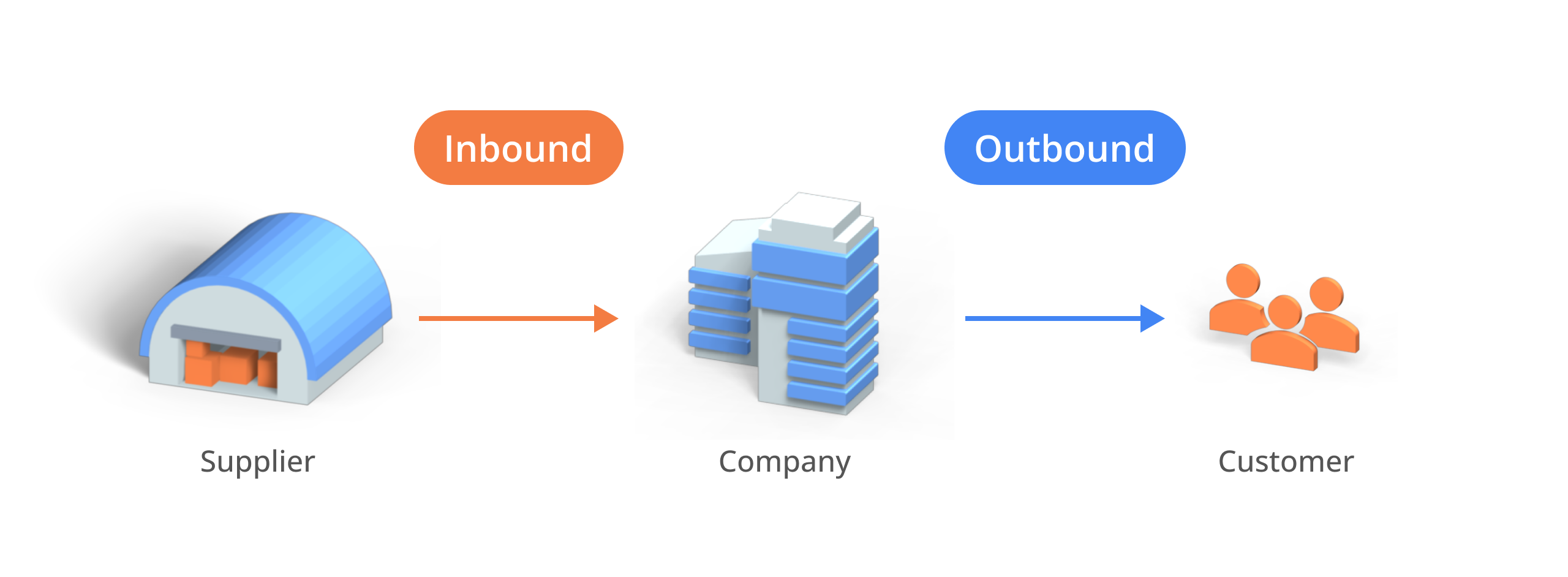
Reverse Logistics
Reverse logistics is transporting goods from end customers back to manufacturers or sellers for returns or exchanges.
It includes collecting goods, inspecting the returned merchandise, refund processing, and shipping out a new product if it’s an exchange.
Learn how to improve your reverse logistics process.
How Route4Me Helps You Optimize Your Shipping Logistics
Route4Me comes with many powerful features that have made shipping logistics seamless for over 40,000 customers. Let’s look at how such features can help transform your logistics operations.
Plan Well-optimized Routes in Seconds
Route4Me route planner can help you plan fuel-efficient routes with accurate last-mile driving directions in 30 seconds. You just need to upload the list of addresses into the system, set some parameters, and hit optimize. That’s it.
The route optimizer will plan the fastest and shortest routes considering the weather, traffic congestion, delivery time windows, roadblocks, and more constraints. As a result, this ensures that your drivers do not get stuck on the road and that your deliveries will be on time.
Learn how Route4Me can help you plan a route with multiple stops in 30 seconds.
Route4Me also offers a pick-and-pack optimization feature to make the warehouse picking efficient and streamline shipping and logistics.
Want To See For Yourself How Route4Me Can Boost Your Profits?

Helps Reschedule Deliveries Seamlessly
Last-minute orders and cancellations can mess up your delivery schedule. Rescheduling also takes a significant time when you do it manually.
But Route4Me comes with a re-optimization feature that helps you fit new orders into the existing schedule efficiently to ensure none of your deliveries get affected.
Any changes made to the system are automatically synchronized to the Route4Me route planner app on drivers’ mobile devices. So, drivers never miss out on any changes.
Improves Customer Experience with Real-time Order Tracking
Route4Me comes with a customer alerting and notification feature that automatically notifies customers through voice calls, SMS, or email when their orders are out for delivery or near their location.
You can set the alerting rules as per your preference. For instance, you can notify a customer when the driver is within five minutes of their location.
Route4Me’s multi-stop route planner also comes with a customer portal feature that enables customers to monitor their order status on their own. But you can control the amount of information they can see. You can display driver identities, estimated arrival times, and much more.
Both these features help improve customer experience and satisfaction. Furthermore, it enables you to avoid failed deliveries.
Learn how to improve first-time door opens in last-mile delivery.
Helps Track Vehicles in Real-time to Make Shipping and Logistics Efficient
Route4Me comes with a GPS tracking feature to help you track vehicles in real-time and ensure your shipping and logistics don’t go south. Therefore, you would immediately know whenever drivers make personal stops, engage in aggressive driving, or get stuck somewhere due to a breakdown. This helps you ensure your drivers stay on schedule. Furthermore, you can ensure driver safety.
In addition, Route4Me’s trucking GPS app comes with a speed alert that automatically notifies whenever a driver crosses the speed limit. This helps you take corrective action immediately before it becomes too late.
Helps Assess and Improve Driver Performance
Route4Me’s delivery scheduling software comes with a reporting and analytics feature that helps you track driver performance, so you can see how much time drivers spend at each customer location, the length of time they take to reach their destination, and other valuable information.
The software also helps you provide data-driven feedback to your drivers to improve their performance, enabling you to leverage such data to identify and reward your top performers accordingly.
Learn six benefits of delivery management software.
Route4Me’s delivery route planner app has been downloaded over 2 million times. The best part is you can try Route4Me’s vehicle routing software for free for seven days to see if it suits your requirements.
Therefore, use our Get Started and see how it can transform your shipping logistics.
Want To See For Yourself How Route4Me Can Boost Your Profits?

